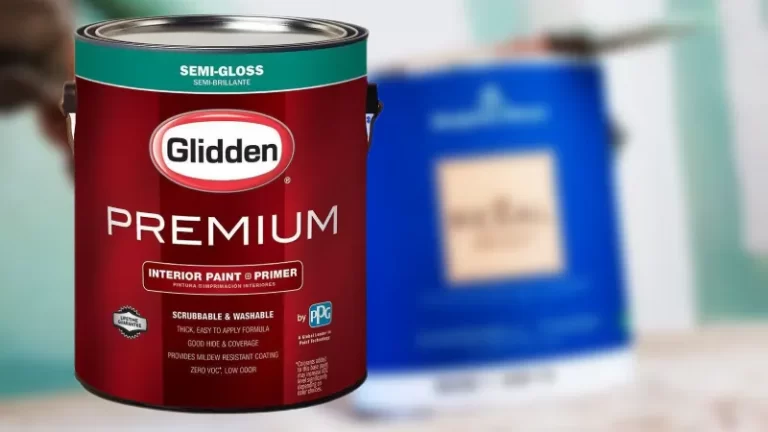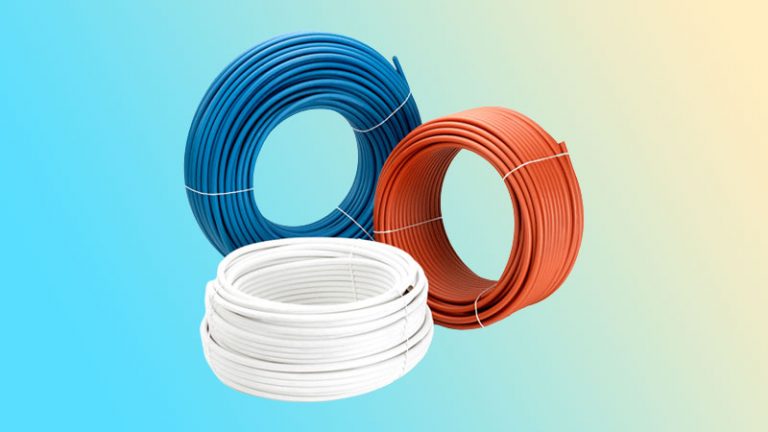What Causes Joint Compound to Mold [And Prevention]

A joint compound, also known as drywall mud, is a mixture of gypsum, water, and other ingredients that are used in drywall construction to fill in gaps and smooth out surfaces. It is an essential component of the drywall installation process and is used to create a seamless finish on walls and ceilings.
While the joint compound is generally easy to work with and durable, it is important to store them properly to prevent mold growth. Mold can compromise the quality and safety of the joint compound, leading to potential issues with the finished drywall.
Therefore, it is crucial to take steps to prevent mold growth on joint compounds to ensure the success of your drywall projects.
You'll Learn About
Factors That Contribute To Mold Growth On Joint Compound
There are several factors that can contribute to mold growth on the joint compound:
- High humidity levels: Mold thrives in damp and humid environments, so if the humidity levels in your home are too high, it can create the perfect conditions for mold growth on the joint compounds.
- Poor ventilation: If a room has poor ventilation, it can cause moisture to build up and contribute to mold growth.
- Water leaks: If there are water leaks in the room, it can cause moisture to accumulate and lead to mold growth on the joint compound.
- Condensation: Condensation can occur when warm, moist air comes into contact with a cold surface, such as a window. This can lead to moisture buildup and create the conditions for mold growth.
- Poorly sealed surfaces: If surfaces are not properly sealed, it can allow moisture to seep in and contribute to mold growth.
- Lack of cleaning: If the joint compound is not cleaned regularly, it can create the perfect environment for mold to grow.
How Humidity Affects it?
The most significant factor is the humidity and dampness of the storage environment. Mold requires moisture to grow, and if the joint compound is stored in a humid or damp place, it is more likely to become contaminated with mold spores.
This is especially true if the joint compound is left open to the air and is not properly sealed or covered. The lack of proper sealing or covering of the joint compound can allow moisture and mold spores to enter the bucket, leading to the growth of mold on the compound.
It is important to store the joint compound in a dry, well-ventilated area to minimize the risk of mold growth. Covering the compound with the plastic sheet provided in the bucket or using a lid to seal the bucket can also help to prevent mold growth.
How To Prevent Mold Growth On Joint Compound
To prevent mold growth on the joint compounds, it is important to store the compound in a dry, well-ventilated area. This can help to minimize the risk of moisture entering the bucket and causing mold growth.
It is also a good idea to cover the compound with the plastic sheet that is provided in the bucket or to use a lid to seal the bucket. This will help to keep moisture and mold spores out of the bucket and prevent contamination of the compound.
If you do find mold on the joint compound, it is best to discard the compound and use a new batch. Using a fungicide may kill the visible mold, but it cannot guarantee that all the mold spores have been eliminated, and the risk of mold growth may remain.
By following these steps, you can prevent mold growth on the joint compound and ensure the quality and safety of your drywall projects.
What To Do If You Find Mold On Joint Compound
If you do find mold on the joint compounds, it is important to take immediate action to prevent the spread of the mold and any potential health risks.
Discard
The first step is to discard the affected compound and use a new batch. It is not safe to use a joint compound that is contaminated with mold, as the mold can potentially cause respiratory issues and other health problems.
Cleaning
In addition to discarding the compound, it is also important to clean and sanitize the storage area and tools to prevent further contamination. This can help to ensure that any remaining mold spores are eliminated and prevent future mold growth.
Use a cleaning solution recommended for use on mold, such as a mixture of water and bleach, and follow the manufacturer’s instructions for use. Wipe down the storage area and tools with the cleaning solution and allow them to dry completely before using them again.
By taking these steps, you can effectively address the issue of mold on the joint compounds and protect your health and the quality of your drywall projects.
How Do You Prevent Mold Naturally?
Here’s a step-by-step guide on how to prevent mold naturally:
Tools needed
- Exhaust fans
- Dehumidifier
- Humidifier
- Natural wood varnish
- Grout sealant
Improve ventilation
Open windows when it’s warm and dry to allow fresh air to circulate and reduce dampness in your home. You may also consider using exhaust fans in the bathroom and kitchen to help remove excess moisture.
Let the sunshine in
Open your curtains and blinds during the day to let sunlight in. Sunlight is a natural disinfectant and can help kill mold spores.
Improve your drainage
Make sure that water is draining properly away from your home to prevent water from accumulating and causing dampness. Check your gutters and downspouts to ensure they are in good condition and direct water away from your foundation.
Keep your wet areas dry
Wipe down surfaces after use and fix any leaks promptly to prevent water buildup. Use a dehumidifier in damp areas, such as the basement, to reduce humidity levels.
Use a humidifier
If the air in your home is too dry, it can cause drywall and wood to crack, which can create the perfect breeding ground for mold. Use a humidifier to add moisture to the air and keep humidity levels between 30-50%.
Vanish your wood
If you have wood surfaces in your home, such as wooden furniture or flooring, use a natural wood varnish to protect them from moisture.
Use grout sealant
If you have tiles in your home, make sure to use a grout sealant to prevent water from seeping into the joints and causing mold to grow.
Tips For Prevention
Here are a few additional tips for preventing mold growth on the joint compounds:
Use A Drywall Primer
Applying a drywall primer to the surface before applying the joint compound can help to seal the surface and prevent moisture from seeping into the compound. This can reduce the risk of mold growth.
Use A Moisture-Resistant Joint Compound
Some joint compounds are specially formulated to be more resistant to moisture, which can help to prevent mold growth. These types of joint compounds may be a good choice for use in high-humidity or damp environments.
Use A Dehumidifier
Keeping the humidity levels in your work area low can help to prevent mold growth on joint compounds. Using a dehumidifier can help to control the humidity levels in your workspace and reduce the risk of mold growth.
Keep The Joint Compound Covered
It is a good idea to keep the joint compound covered whenever it is not in use to prevent it from becoming contaminated with mold spores. Use the plastic sheet provided in the bucket or a lid to cover the compound when it is not being used.
Dispose Of Leftover Joint Compound
If you have a leftover joint compound after a project, it is a good idea to dispose of it rather than store it for future use. This can help to prevent mold growth and ensure that you are using fresh, high-quality joint compounds for your projects.
Editor’s Note
It is possible for mold to grow on joint compounds if it is not stored properly. Joint compound, or drywall mud, is a mixture of gypsum, water, and other ingredients that are used to fill in gaps and smooth out surfaces in drywall construction.
If the joint compound is left open to the air and is not properly sealed, it can become contaminated with mold spores that are present in the air. This is especially likely if the joint compound is stored in a humid or damp environment.
To prevent mold from growing on the joint compound, it is important to cover the compound with the plastic sheet that is provided in the bucket or to use a lid to seal the bucket. It is also a good idea to store the joint compound in a dry place, such as a garage or basement, to minimize the risk of mold growth.
If you do find mold on the joint compound, it is best to discard the compound and use a new batch. Using a fungicide may kill the visible mold, but it cannot guarantee that all the mold spores have been eliminated, and the risk of mold growth may remain.
Frequently Asked Questions
- What causes mold to grow?
Mold grows in damp and humid conditions, so it is often caused by water leaks, high humidity levels, and poor ventilation. - What are the signs of mold in a home?
Some common signs of mold in a home include musty odors, visible growth on walls or surfaces, and respiratory issues in the occupants. - How do I know if I have a mold problem?
If you suspect you have a mold problem, it is important to have it professionally assessed. A professional will be able to identify the type of mold present and recommend the best course of action. - Can mold be completely removed from the home?
It is difficult to completely remove all mold from a home, as it can grow on a variety of surfaces and in hidden areas. However, it is possible to control and prevent further growth by reducing moisture and improving ventilation. - Can I prevent mold from growing in the future?
To prevent mold from growing in the future, it is important to address any water leaks and fix them promptly, keep the humidity levels in your home between 30-50%, and improve ventilation by opening windows and using exhaust fans.
Conclusion
In conclusion, proper storage and handling of joint compounds are essential to prevent mold growth and ensure the quality and safety of your drywall construction projects. Mold can compromise the integrity of the joint compound and potentially cause health issues, so it is important to take steps to prevent mold growth.
By storing the joint compound in a dry, well-ventilated area and sealing it properly with the plastic sheet provided in the bucket or a lid, you can minimize the risk of mold growth. Some people also fetch brick mold in doors.
If you do find mold on the joint compound, it is important to discard the affected compound and use a new batch, as well as clean and sanitize the storage area and tools to prevent further contamination. By following these steps, you can prevent mold growth on the joint compounds and ensure the success of your drywall projects.



